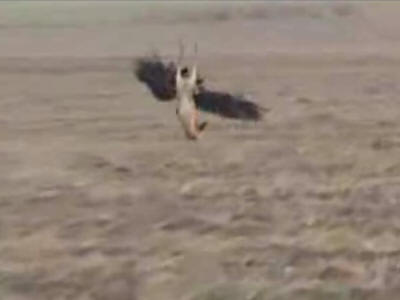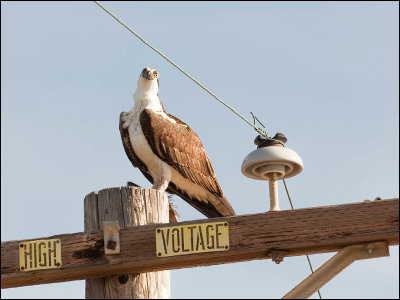'Feather Detective' Roxy Rayborn, who investigated thousands of bird strikes

In 1960, a passenger plane with 72 passengers and crew crashed due to a bird strike, killing 62 people in the 'bird strike accident that caused the greatest casualties in American aviation history.' It was Mr. Roxy Rayborn, a 'feather detective', who established 'forensic ornithology' through the investigation of this accident.
Roxie Collie Laybourne --Wikipedia
Meet Roxie Laybourne, the Feather Detective Who Changed Aviation | At the Smithsonian | Smithsonian Magazine
https://www.smithsonianmag.com/smithsonian-institution/meet-roxie-laybourne-feather-detective-who-changed-aviation-180971803/

Roxy Laybourne's eagle eye The nation's bird lady: If the FBI or the FAA wants to solve a case involving birds, they turn to the Smithsonian's Roxy Laybourne. Her investigation of Chinese duck feathers once led to a murder conviction. --Baltimore Sun
Rayborn was born in 1910. He has been working at the North Carolina State Museum of Natural History since 1932, at the Fisheries Research Institute of the National Museum since 1944, and at the Bird and Mammals Institute of the United States Fish and Wildlife Service since 1946. Until 1960, his career was 'I have been a taxidermist for 15 years.'
The turning point was the crash of Eastern Air Lines Flight 375 on October 4, 1960. Lockheed L-188 Electra , carrying five crew members and 67 passengers, made a large left turn and crashed into Winthrop Bay six seconds after taking off from Logan International Airport in Boston. 62 people have died.
Rayborn, who was called in to investigate the accident, concluded that the accident was due to a bird strike by a herd of European starlings. Each European starling weighs only about 85g, but because it forms a flock of hundreds to thousands of birds, the first engine, second engine, and fourth engine each have at least one or more starlings in this accident. Inhale and stop. The accident occurred at an altitude of only 120 feet (about 37 m), once climbed to 200 feet (about 61 m), and the 2nd and 4th engines also picked up, but the crash could not be avoided. did. The aircraft that fell into Winthrop Bay broke in two and sank into the sea, and many passengers were unable to leave their seats before the aircraft sank and were sacrificed. It took less than a minute from the start of takeoff to the submergence of the aircraft.
Starting with this accident investigation, Rayborn became a pioneer in 'forensic ornithology' and has investigated a total of thousands of bird strike accidents. With the development of 'Forensic Ornithology' by Mr. Rayborn, the aviation industry has been able to identify the species of birds that are prone to bird strikes and take measures such as warding them off in advance.
What Rayborn does during a bird strike is a survey called the 'Roxy method.' Step 1 of the 'Roxy Method' is to 'look at all the physical evidence extensively and consider everything from the timing of the bird strike to the time the feathers are collected.' 'If your nose is so close to the tree that it sticks to the bark, you can't tell what kind of tree it is. Take a step back and see the big picture,' said Mercy Heaker, who learned from Rayborn. It was said that.
Step 2 is 'cleaning the feathers', and step 3 is 'looking at the fine structure of the feathers under a microscope to find out the species of bird'. At this time, it is said that it may be compared with thousands of types of samples.

by Smithsonian Institution
We make slides for viewing with a microscope by ourselves, but Mr. Rayborn is also strict as a teacher, and when Mr. Heaker's method of making is bad, he said that he was told to 'make the next slide' without looking under a microscope. ..
Then, in step 4, narrow down to 2 or 3 types.
Later, DNA analysis was incorporated into forensic ornithology by Dove and Heaker. Mr. Rayborn also knew about the DNA analysis that came out in the latter half of his career, but he said he did not like it very much because it was expensive and required a special laboratory.
However, there are some cases showing that DNA analysis is not perfect. In 2008, there was an accident in which a fighter encountered a bird strike. A smear of blood, fat, and feathers, called 'snarge,' was collected near the injured area and subjected to DNA analysis, with the conclusion that it was 'white-tailed deer.' Moreover, despite the re-examination, the results were the same three times.
In response, Dove et al. Returned to the origin of the Roxy method and focused on investigating the structure of the feathers. The snarge was certainly mixed with deer hair, but I also found black vulture hair. It is believed that this is because the DNA of the deer, not the condor, was detected by DNA analysis as a result of the 'black vulture that ate the carcass of the deer collided with the fighter'.
There are also cases where we cooperated in case investigations other than bird strikes. In the murder of his wife in Alaska, authorities speculated that the criminal had abandoned his body in the sea. Unfortunately, the body was not found, but the down jacket that seems to have been worn by his wife was washed ashore on the shore. Rayborn, who was contacted by the FBI, concluded that the feathers of the duck in the down jacket matched the feathers taken from her husband's car. FBI agents said Rayborn's findings helped convict him, along with eyewitness testimony that his husband was loading something into his car.
Related Posts:
in Note, Posted by logc_nt







